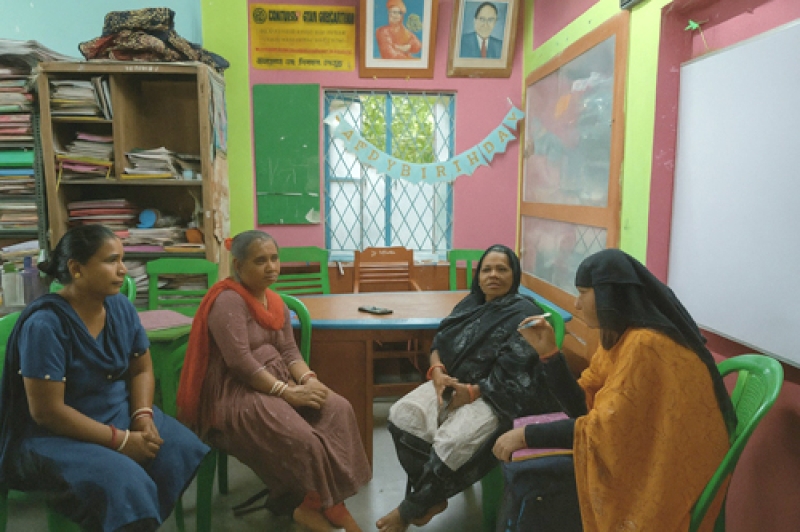From Shackles to Strength: Sahida’s Journey of Resilience and Reclamation
*From Shackles to Strength: Sahida’s Journey of Resilience and Reclamation*
In a quiet village tucked away in rural India, Sahida was born the eldest of six siblings in a family that lived by the land and survived on resilience. Her father worked dawn to dusk in the fields, while her mother, though a homemaker, took on odd jobs to keep the household afloat. Despite the hardship, young Sahida carried within her dreams that were modest but profound—a life filled with love, dignity, and peace.
Education was her gateway to that life. She studied with quiet determination, reaching as far as Class 9. But poverty, relentless and unforgiving, forced her dreams to pause. Her parents, hoping to secure her future, arranged her marriage—believing it was the only protection they could offer.
What followed, however, was not protection but betrayal.
Sahida’s marital home, wealthier and more entitled, treated her with disdain. Her in-laws reminded her daily of her “inferior” background, reducing her presence to something barely tolerated. The abuse was not only verbal. When her brother-in-law began harassing her sexually, the walls closed in. Stripped of safety, she made the courageous decision to return to her parents’ home—a rare act of defiance, a plea for dignity.
But just as she began seeking a new path, another deception found her.
A stranger began calling, his voice seemingly filled with empathy. Over time, he introduced her to a man named Farid—a smooth-talking “well-wisher” who painted pictures of a better life. He convinced Sahida to accompany him on what he called a short “tour,” cautioning her not to inform her family. Desperate for escape and blinded by trust, she agreed.
She boarded a train from Howrah to Mumbai—believing she was stepping into freedom. Instead, she was delivered into captivity.
At Kalyan station, a woman named Nazma met them and took Sahida to a small, unfamiliar room. There, the truth unravelled. Farid had sold her to Nazma and a man named Raju for ₹50,000. Sahida had been trafficked.
What followed were days of darkness. Exploited and confined, her spirit began to fracture. But life took another cruel turn—Nazma and Raju had a falling out. In the aftermath, Raju’s behaviour shifted. He became tender, made promises of a better life, and convinced Sahida to marry him at a temple. For one fleeting month, she lived with him as his wife, clutching onto a fragile sense of stability.
It didn’t last. Farid returned, demanding the remainder of his payment. When Raju refused, threats loomed large. To protect Sahida, he sent her to a friend’s house in Gulbarga. But safety once again proved to be a mirage.
Instead of refuge, she was taken to a lodge—where a new tormentor awaited. Once more, Sahida was forced into prostitution, and once more, she found the strength to flee.
Her escape was short-lived. Traffickers intercepted her and passed her from hand to hand. First to a woman named Rani in Shahajanpur, then to a broker named Durga Raut. Each time, her freedom slipped further away. Each time, her spirit was tested.
And then—at last—a break in the storm.
A police raid shattered the walls of her captivity. Sahida was rescued and placed under the care of the Rescue Foundation through a court order. There, she found something she had been denied for years: compassion. Through counselling and consistent care, she began to reclaim her story—no longer as a victim, but as a survivor.
It was during this critical phase of healing that Goranbose Gram Bikash Kendra (GGBK) entered her life. With empathy and unwavering support, GGBK helped reunite Sahida with her family and provided her with skill-building training. Bit by bit, her confidence returned. Her voice—once buried under fear—began to rise.
Today, Sahida is not only free—she is fearless.
In her village, she is a leader. She has intervened in and prevented three child marriages, ensuring that other girls don’t face the same fate she did. She now works to empower women, helping them access government schemes, rebuild their lives, and rediscover their self-worth.
Sahida’s journey, once shrouded in silence, is now a call to action. Her life stands as a testament to the resilience of the human spirit—proof that even in the face of unimaginable trauma, hope can take root and bloom again.
From pain to power, from exploitation to empowerment—Sahida’s story is a beacon for those still trapped in the shadows. And with every life she touches, she brings the dawn a little closer.

